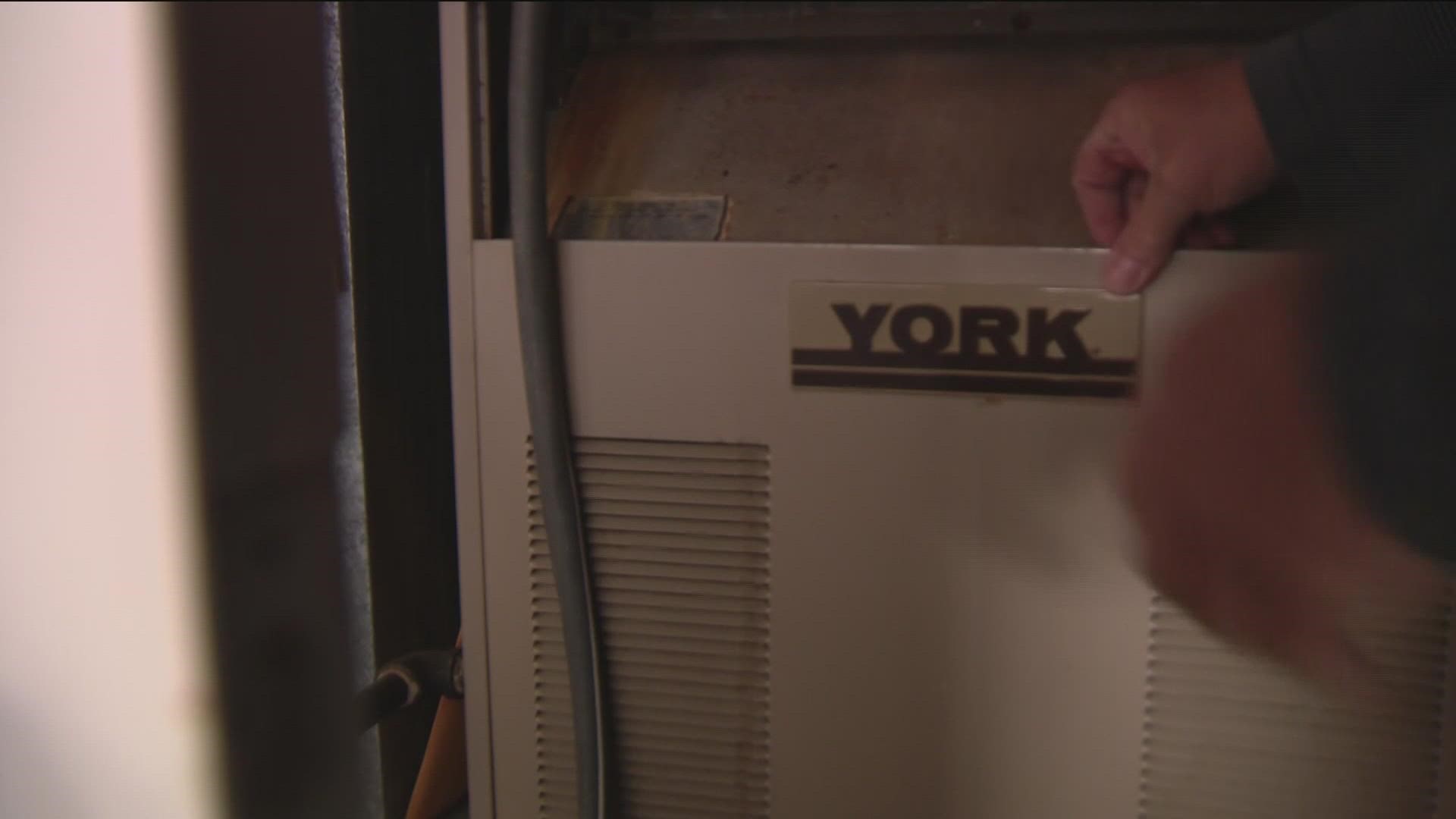BOISE, Idaho — With temperatures well below freezing this week, more people are staying inside to warm up.
KTVB spoke with two companies for tips on how to safely maintain your HVAC system, and make sure your fireplace is safe.
HVAC Maintenance
Western Heating & Air Conditioning says they get a lot of no heat calls during the winter. They also encounter frozen pipes and drains.
To avoid that, you'll want to make sure keep your heat on.
"The first thing I would always tell somebody is just don't worry about the numbers so much. Set the thermostat to what temperature you're comfortable with." Ben Welgan, operations manager of Western Heating & Air Conditioning said. "As far as general maintenance things around your house, when it gets this cold outside, I would say make sure that you keep your garage door shut. There's a lot of pipes and things out there that can freeze, make sure that your hoses are disconnected and drained - hopefully, you've done that already. Another thing that's important to remember is you can save some money by turning your thermostat down when you're out of town. But we don't recommend you turn it down below about 55 degrees."
Welgan said areas with water pipes can be much cooler than other parts of a house. So pipes are in danger of freezing of the thermostat is turned too low.
You'll also want to keep an eye on your filter.
"It never hurts to just check it. Often if you pull the filter out, it's always good to just hold it up to a light," Welgan said. "If you can see light through it, that means air can come through it. Sometimes if you look at a filter without holding it up to the light, you can't tell if it's dirty or not because it might have some real fine particulate. But holding it up to the light is a great test. Any light you see, the air can move through that as well."
One of the most common questions that Western Heating & Air Conditioning gets is about ice on heat pumps, which are installed outside.
"Heat pumps will develop a little bit of frost on the outside, that's by design," Welgan said. "As the air is moving over that heat pump, it's removing the heat from the air, and it ends up forming frost on it. So, what will happen is every 30 to 90 minutes, it'll go through a defrost cycle and melt the ice off. So, if you walk outside and you see your heat pump has some frost on it, that's okay if it's that white, fluffy frost. But if it's thick, clear ice - that means it's not defrosting properly, and you may have an issue and you should call somebody about that."
Fireplace safety
Many people haven't lit up their fireplaces since last winter. You'll want to make sure it's clean and safe to do so.
Ritchie Abromeit is a certified chimney sweep and owner of Idaho Fireplace & Chimney, he says winter is their busiest time of the year.
"If there's been some time in between getting it cleaned, getting it inspected, it's always a good idea to have someone who knows what they're looking for run a camera on the inside, just make sure when you operate the fireplace, you're not putting your home or your family at risk," Abromeit said. "Stuff can change over time on the inside of a chimney, inside of a fireplace, with or without warning at times. So that's why the Chimney Safety Institute of America recommends having your chimney inspected annually."
Weather, animals, and use can all impact a chimney and cause issues on the inside. The type of fuel being used in a fireplace can also make a difference.
"Depending on the type of fuel being burned, you will get either a buildup of creosote on the inside from wood burning typically. That - if it builds up enough can actually be flammable and is part of the cause of like a chimney fire, which is much more dangerous to the structure of the home and the chimney itself," Abromeit said. "Gas burning does produce soot; it builds up a lot less quickly. But still to maintain cleanliness and safety and everything, you want to get that cleaned."
Abromeit says it's also important to make sure the passageway that is venting is airtight and able to withstand temperatures and buildup. Idaho Fireplace & Chimney does an inspection with every cleaning.
"The exhaust is one of the big differences. With a gas fireplace, you want to make sure it's airtight, you want to make sure it's functioning properly because carbon monoxide is one of the outputs of burning gas. And of course, they call it the silent killer because it's odorless, colorless," Abromeit said. "For wood burning, it's really obvious if it's not venting properly because you get a lot of smoke in the room. With gas it's a lot less obvious."
While it's recommended you have your chimney inspected annually, a chimney's cleaning frequency can vary.
"If it's nice dry split, seasoned wood, a cord-and-a-half to two cords of woods a good marker to need to get it cleaned," Abromeit said. "Gas fireplace, it's a little more subjective. I usually recommend every other year or so just to keep up on it, more so with the actual components of the gas fireplace, make sure that they're operating well."
Watch more Local News:
See the latest news from around the Treasure Valley and the Gem State in our YouTube playlist:

